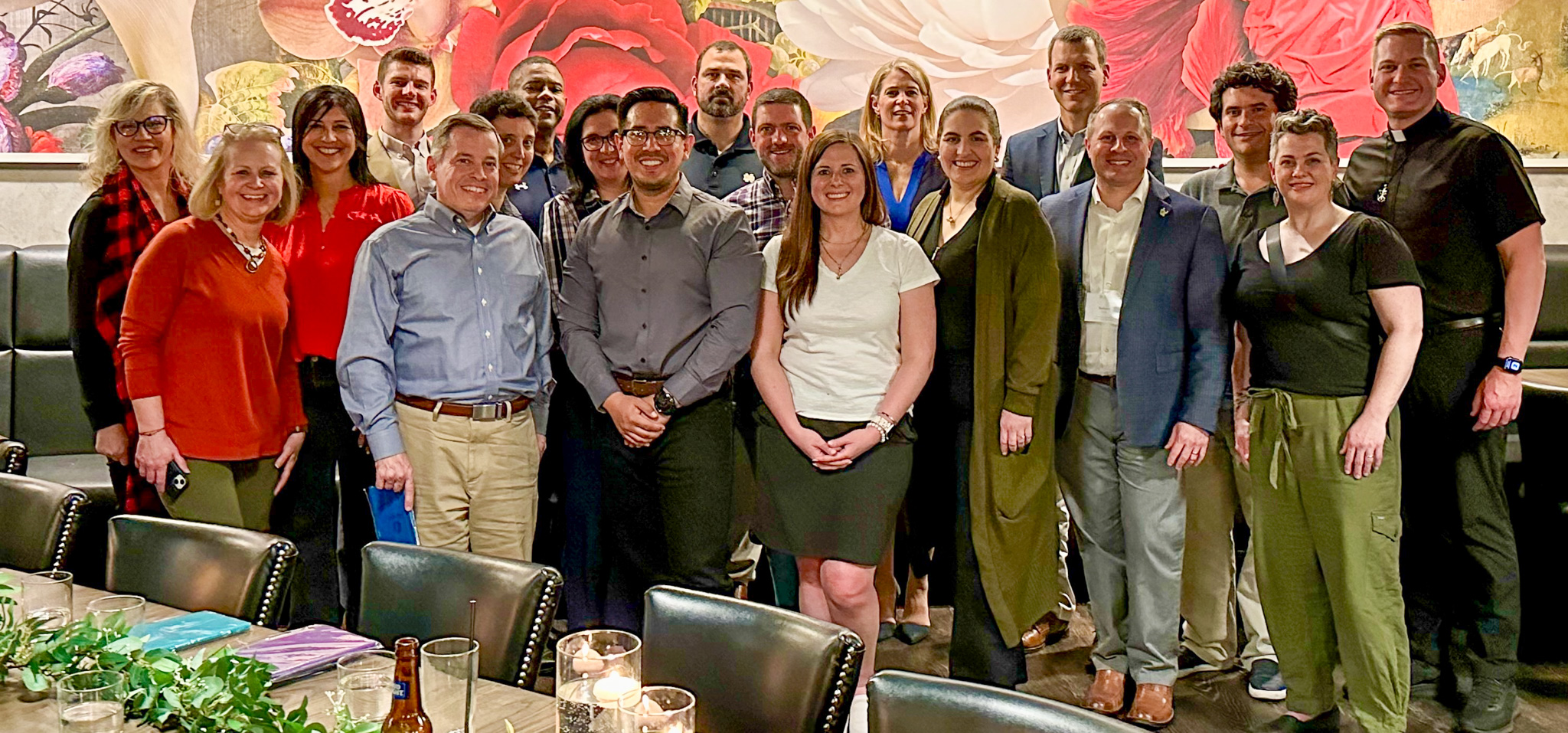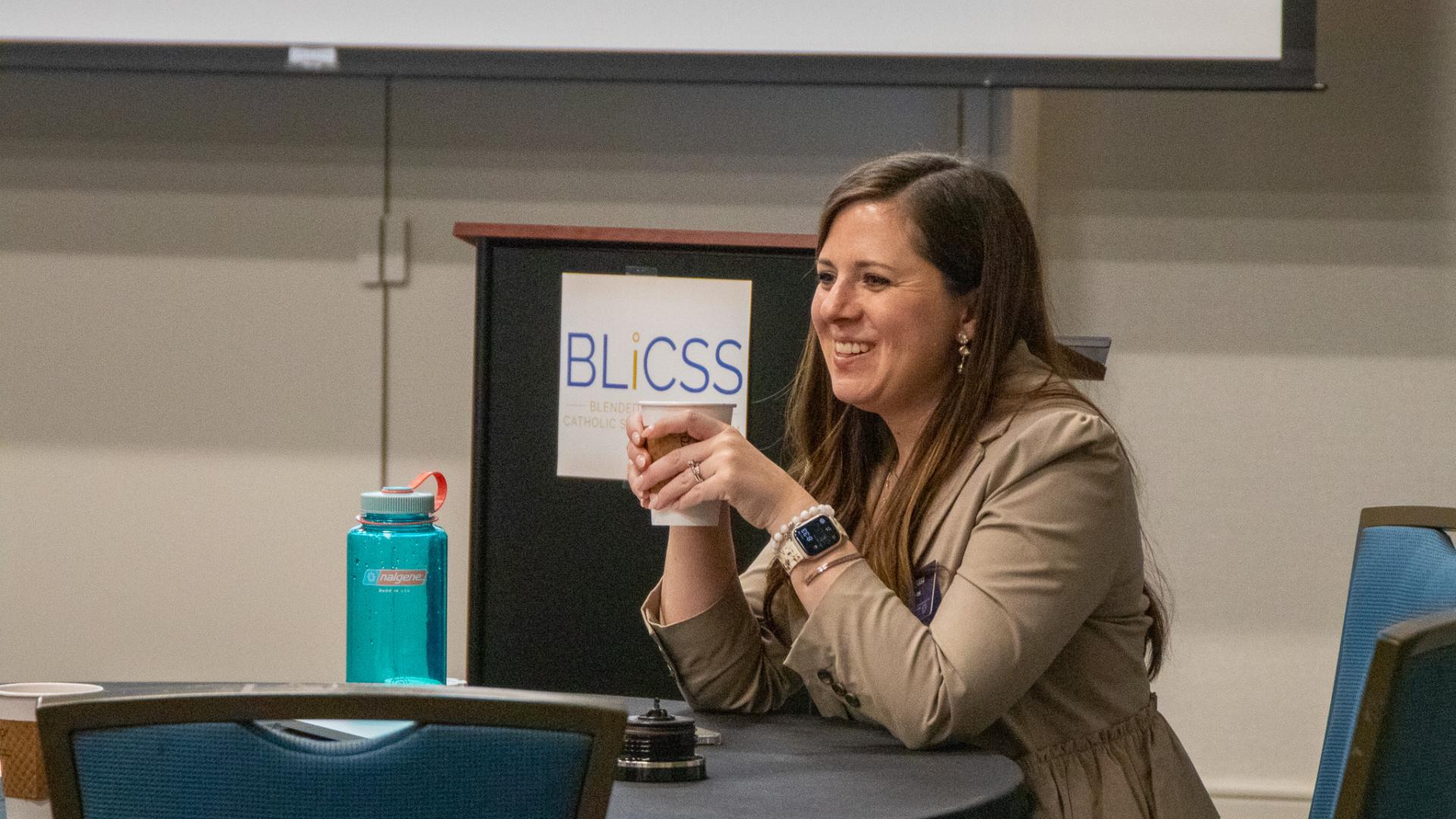Visit our AI in Catholic Education Webpage for Artificial Intelligence (AI) policy resources, tool recommendations, and professional development materials for Catholic school educators and leaders.
What is the role of AI in Catholic education? The seventh annual Blended Learning in Catholic School Symposium (BLiCSS 7.0) explored this question in depth. This year's theme, "Shaping the Vision of AI and Catholic Education," provided a platform for administrators and thought leaders to delve into the intersection of artificial intelligence and education. The symposium was a huge success and brought together scholars and administrators from across the country and Canada. We discussed the impact of AI in three areas of Catholic education: Planning and Pedagogy, Assessments, and Moral and Ethical Implications. While we wish we could share all of the fruits of this gathering of thought leaders and innovators, we have to narrow it down. So, in accordance with our tradition, we've compiled seven takeaways from BLiCSS 7.0 to share with you.
Takeaway #1: The Need for Ethically-Informed AI Literacy
How can we shape AI literacy for educators and students? AI literacy emerged as a recurring theme that warrants more discussion, particularly from a Catholic point of view. In sum, AI literacy encompasses understanding design principles, evaluating software tools, and discerning the moral and ethical implications of AI. Regarding that third component, Fr. Nate Wills suggested that the moral and ethical implications of AI “is something that we as Catholics can lead in…let’s have a virtue-based approach.” Several attendees agreed: in Catholic schools, being digital citizens should extend beyond technical knowledge to forming "informed disciples of Christ" who can navigate the ethical and moral landscapes of AI.
Takeaway #2: Elevated Expectations for Teaching and Learning
What does AI mean for teaching and learning? Alan Barnicle stated simply, "We get to expect more." We, as educators, can expect more from students if they can use AI tools for writing, brainstorming, or editing assistance. AI tools can give personalized feedback to students that can help them learn. Additionally, we can expect more in terms of the quality of teaching. With lesson-planning bots and other educator-specific tools, AI can provide a helpful starting point for planning. Throughout the conference, we summed this up by saying that AI can get us “80% there, but it is up to teachers to finish the job.” AI introduces a positive pressure on educators to move beyond haphazard planning, rote teaching, and shallow assessments through education-specific educator-facing tools. An AI-generated lesson plan isn’t a finished product, but rather a springboard for more impactful teaching. A recurring sentiment throughout the conference was that AI can get us “80% there, but educators should refine its outputs to get to 100%.” Lastly, we also get to expect more in terms of adaptive software. Lewis Poche shared that AI-enhanced adaptive software will be better at predicting the “right next step” and providing differentiated learning opportunities for students. All things considered, AI isn’t changing teaching and learning but rather, providing tools so that it can be elevated.
Takeaway #3: The Evolving Role of the Teacher
What will the role of a teacher look like going forward? This question has been top-of-mind for many educators. Throughout BLiCSS, the consensus was that teachers shouldn’t fear being replaced by a robot anytime soon - likely never. Yet, assuming that the roles teachers fill in the classroom will remain unchanged is naive. During a panel discussion, the moderator posed a question: “How will the role of the teacher evolve in the era of AI?” Shannon Tabaldo shared two: "subject-matter experts and connectors." While there are many jobs that AI technology can do in a classroom, teaching informed by deep content-matter expertise and connecting with students personally, are jobs that AI cannot do sufficiently well. The role of a teacher will remain central to the classroom, and AI tools will not overshadow it. Shannon continued by saying that "AI is a tool that can enhance teachers...if it fits." What are our recommendations to teachers to see if a tool fits? First, remember to play! Play around with AI tools to see if they fit into your classroom. Second, optimize your role in the classroom. Lean into the jobs that AI cannot do, these are the ones at which teachers can shine.
Takeaway #4: Collaborative AI Policy-Making (and re-making)
How do organizations set AI policies? One key theme that surfaced during BLiCSS was the inclusion of multiple stakeholders - students, teachers, parents, and administrators - in discussions about AI policies. It truly takes a village. It's important to collectively explore comfort levels and concerns with AI usage. Are students comfortable with receiving AI-generated feedback on essays from teachers? Are parents concerned that teachers who ban AI from the classroom are doing their children a disservice? What’s the guiding star for writing AI Policy? Policies should prioritize student learning. Megan Cerbins emphasized that policy-making will be an ongoing process, requiring continuous refinement and adaptation over time. Additionally, it is vital for teachers, principals, and administrators making policy to acknowledge the nuance surrounding this topic. For example, North Carolina’s Department of Education released a guide to AI in schools that included a helpful continuum of AI use in classrooms.
Takeaway #5: An Opportunity to Advance Accessibility with AI
How can AI lower the barriers to entry for learning, particularly for marginalized students? Blended and personalized learning strives to leverage technology to meet the needs of all students. Those needs are many and varied. While some students have fewer barriers to learning, for many marginalized learners, such as English Language Learners and students with learning differences, these barriers to learning are high. AI presents unique opportunities to enhance accessibility through improved human-computer interfaces, and specialized programs (IEP generators, real-time translators, writing coaches) could be particularly beneficial in supporting their learning journey.
Takeaway #6: Visionary Leaders Ready to Shape AI in Catholic Education
What is most needed? Leadership. Here are two stats that fascinated us: 1) According to EdWeek, 79% of educators say their districts still do not have clear policies on the use of artificial intelligence tools. 2) According to 4-H, 72% of students say that they would like at least some help from adults in learning how to use different AI tools. Put these facts together, and we begin to see the issue. Many educators in Catholic schools are hesitant to engage in discussions about AI in education. This is understandable as educators have many priorities and AI has proven to be a rapidly evolving landscape. Yet, participants agreed that Catholics and Catholic school leaders can’t simply “opt out.” The same sentiment echoed throughout BLiCSS that Tom Hanks' emphasized in his 2023 Harvard commencement address: "If you don't, who will?" Students seek guidance, and educators have a responsibility to provide guidelines for appropriate AI usage.

Takeaway #7: The Future of Learning Isn’t Defined by Star Trek
Will Star Trek’s depiction of learning come to fruition? Star Trek has a track record of predicting future technology (though we still haven’t unlocked teleportation). In a recent Star Trek movie, a scene depicted a rather dystopian view of the future of learning (for Vulcans, at least). To some, the whole conversation about AI feels like something straight out of science fiction. At BLiCSS 7.0, we acknowledged that it's okay to be filled with both fear and fascination - even for far-flung fantasies. Yet, what is more important is to focus our attention on the actions we can take today to shape the vision of AI in Catholic education. As educators, we have this unique opportunity to capitalize on the strengths of technology to meet the needs of all students.
BLiCSS 7.0 is now behind us, but this is just the beginning. How will you prepare your organization - your classroom, your school, your diocese - to be AI-ready? The Higher-Powered Learning team is here to help you navigate this opportunity. If you want to learn about Professional Development opportunities from Higher-Powered Learning on AI in Catholic Education, email hpl@nd.edu.
Since 2015, Higher-Powered Learning has empowered Catholic school teachers and leaders to leverage technology and related innovative research-based educational practices to meet the needs of all learners.
Subscribe to the "Higher-Powered Learning News" list to join us in this mission.
If you have any questions about Higher-Powered Learning, please contact our team at hpl@nd.edu.
 Alliance for Catholic Education
Alliance for Catholic Education



